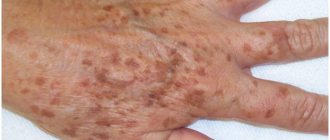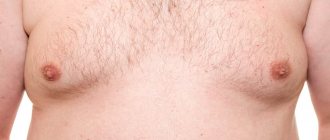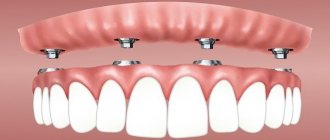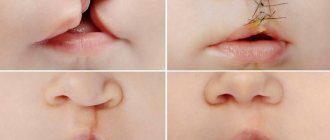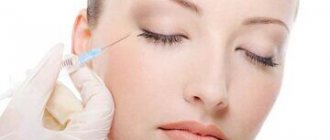What is puberty?
Puberty, or puberty, is a time when a child experiences several significant bodily changes. These changes concern physiology, psychology and the emotional sphere and mean that the child gradually leaves childhood and enters adolescence.
Changes that occur during this time include:
- physical growth and development of the body, which affects both appearance and internal organs;
- changes in genital organs;
- changes in the brain;
- changes in emotions, relationships and social connections.
How does it manifest itself?
Girls
The first visible sign of the onset of puberty is that breasts begin to develop, this occurs around 10–11 years of age. If a girl needs a bra, a soft top or sports bra is a good place to start.
Another sign that your daughter is entering puberty is a growth spurt. Moreover, some parts of the body may grow faster than others, because of this, it will look awkward and clumsy for some time. Explain to your daughter that this is only temporary, and in a couple of years (or months) everything will return to normal. On average, teenage girls grow 5–20 cm per year, stopping at the age of 16–17 years.
The daughter’s body will also change: the hips will become wider, the external genitalia will increase, and pubic hair will begin to grow. At about 12–14 years of age (two years after breast growth begins), hair will begin to grow under the arms. At the same time, your period will begin. The daughter may experience headaches or abdominal cramps before and during them. Your periods may be irregular at first, but then begin to occur at regular intervals. If your daughter is bothered by itching, severe pain or other unpleasant symptoms at this time, consult a doctor.
Boys
Around the age of 11–13 years, the external genitalia begin to enlarge and pubic hair begins to appear. At 12–14 years old, my son experiences a growth spurt. He will become taller, and his chest and shoulders will become wider. Just like girls, different parts of the body can grow at different rates, so a teenage boy may appear awkward.
On average, boys grow 10–30 cm per year and stop growing at around 18–20 years of age. Also, teenage boys are characterized by slight development of the mammary glands, this is normal and usually goes away on its own, however, if your son is worried or the breasts continue to grow, you can consult a doctor.
Around the age of 13–15, hair will begin to grow on other parts of the body - under the arms, on the face and the rest of the body. The body produces more testosterone, which stimulates sperm production. My son begins to experience nocturnal emissions and gets erections from time to time, often for no reason. Talk to your child about how this is natural and that people usually don't notice it. Around 14–15 years of age, the Adam's apple (“Adam's apple”) becomes more pronounced, and the adolescent's voice “breaks” and eventually becomes lower.
Normal breast conditions in children:
In small children, up to about eight years old, only the nipple and areola are present, they do not have pigmentation, and no glandular tissue is detected by ultrasound.
The beginning of TELARCHE growth is the appearance of glandular tissue (seal behind the nipple).
In 70% of cases, the left mammary gland begins to develop first and this is normal. The difference between the start of growth of the right and left breasts is 3-6 months.
Pain at the start of growth is also normal. With rapid growth and formation of glandular tissue, swelling, discomfort, and increased sensitivity appear; the use of decongestant gels usually solves this problem - you should contact a pediatric gynecologist or pediatrician.
When does puberty begin?
Typically, changes begin in girls at 10-11 years old, in boys - at 11-13 years old. However, this is only a guide: every child is different, and the normal onset of puberty can range between 8 and 13 years for girls and 9 and 14 years for boys.
It is impossible to know exactly when your child will begin puberty. Changes in brain function and hormone levels are subtle, so it is easy to assume that puberty has not yet begun, and be mistaken.
Puberty can end about a year and a half after the start, or it can take up to five years - this range also remains within the normal range.
Every child is different, and this also applies to the onset of puberty: it varies greatly from one child to another, even among children from the same family.
If puberty begins much earlier or later than most peers, the child’s self-esteem may suffer and the perception of his own body may be disrupted.
It is important for parents to monitor for signs of early or late puberty and consult a doctor if necessary.
Obesity in children. Age stages of development. 7–12 (14 years old)
Murzaeva Irina Yurievna
Endocrinologist, Preventive Medicine Doctor
February 10, 2015
The age interval from 7 years to 12 (14.5 years) is such an uncertain period, it is prepuberty (the time before puberty). The minimum age of onset of puberty is 8 (8.5 years), the latest date of onset is 14.5 years
(more often in boys). It is during this period that gender differences in the dynamics of weight gain appear.
Girls gain weight faster and more than boys, which is associated with an earlier onset of puberty. In general, it is during this period that parents note the onset of obesity; the age most often referred to is 8 years. Apparently, it was during this period that the previously established “wrong eating habits” begin to be clearly realized, “stimulated” by the beginning of the synthesis of sex hormones and the increased pubertal concentration of insulin, a hormone that helps absorb glucose.
There is a lot of insulin, both as a result of the “sexual surge” and as a result of overfeeding. It turns out to be a vicious circle: more insulin means more glucose is absorbed, more glucose means more insulin is produced. It is clear how to break this circle - reduce the consumption of “light” carbohydrates . Otherwise, this age period is intermediate and nothing else special.
An important point about the peculiarities of obesity during this period: if a girl with obesity enters puberty, obesity will cause her a disruption in the formation of the hormonal system; if a boy enters puberty, obesity (unless it is obesity of the 4th degree) will not lead to a significant disruption of puberty .
Testosterone, in this case, is the “magic” hormone. Together with growth hormone (and boys produce much more of it during puberty than girls), they create a good metabolism for “melting fat.” For girls, it's exactly the opposite. The female hormone, estradiol, promotes the absorption of a chain of fatty acids several times faster and their deposition in fat depots.
During this period, it is important to begin to accustom the child to regular sports!, to discipline, to self-discipline. It is always important if a child has an adult example before his eyes. It is important for girls to learn plastic arts - dancing, gymnastics. Boys just need discipline, so the type of sport is not important. The main thing is movement, 3-5 times a week, at least 30 minutes a day.
Now about nutrition. I give an example of a CK1 diet for a given age and a set of permitted products. It is not difficult to see that this diet “echoes” the 8th diet according to Pevzner in adults.
It is necessary to exclude: rich broths, smoked meats, spicy and salty snacks, fatty meats and fish, sausages, sausages, fruit juices, soda, chips, crackers, coffee, daily use of sweets, products with xylitol, sorbitol, cakes, pastries, nuts, seeds, mayonnaise, ketchup and other sauces.
Limit: butter to 2 tsp, olive and vegetable oil to 1 tbsp, soups with 2 broths (do not fry vegetables in soup), potatoes, rice, pasta, potatoes (boiled/mashed) to 6-7 tbsp in cooked form - these are foods that are eaten only at lunch, eggs every 2-3 days in the form of an omelet, bread 2-3 pieces a day (not bourgeois, not whole grain, mostly rye), legumes 2 times a week, fruits up to 3 pieces per day (bananas every 2-3 days, limited grapes), refined sugar 1 piece in tea, 2-3 times a day, marmalade with natural juice - 1 piece or marshmallows 1 piece (as an exception), cookies 2 PC. type “Maria”, jam and preserves no more than 1-2 tsp.
Allowed: vegetables, vegetable soups, lean meat and fish (in the form of meatballs, cutlets), stewed, mainly rabbit, beef, turkey, perch, cod (cutlets), cottage cheese up to 5% fat (natural in the morning, casserole in the evening or cheesecakes), low-fat cheese, cereals up to 6 tbsp. in boiled form (except for semolina, less often wheat), milk, kefir, yogurt up to 2-3 glasses a day.
Eat meals in fractions up to 5-6 times a day.
Sample menu for a child at this age:
Morning: any milk porridge 6-7 tablespoons, boiled meat (or cutlet), bread, slightly sweet tea 200 ml. 2nd breakfast: yogurt 200 ml. Lunch: vegetable salad 100-150 g, soup or cabbage soup 200 ml, boiled chicken 100 g, boiled potatoes 100 g, dried fruit compote 200 ml, rye bread 60 g. Afternoon snack: cottage cheese 150 g, dry rye bread 1 piece, compote, or tea, or vegetable juice 200 ml. Dinner: steamed meat cutlet, boiled cauliflower 200 g, wheat bread 1 slice, tea 200 ml. At night: kefir 150 ml.
Naturally, with different degrees of obesity, the caloric content of the diet is recalculated individually, at this age even without gender differences.
fasting days can be introduced into practice - the child’s body is already ready for this. The bottom line is to reduce the calorie intake to 1000 kcal per day once a week. They usually start with “protein” fasting days - cottage cheese, meat or dairy, then move on to fruit or vegetable fasting days; it is good to use double fasting days: 1st day - protein, 2nd day - carbohydrate. Water is not limited these days.
One of the main factors in the treatment of obesity is suppressing appetite by consuming large-volume, but low-calorie, predominantly protein, monotonous food!
After completing the subcalorie diet stage, when the required weight is reached, a transition to a maintenance diet with the gradual introduction of “forbidden foods”, you can continue the practice of fasting days.
From the age of 9 years, medications can be administered to help a child with a high degree of obesity and pathological hyperinsulenism lose weight. But this issue can only be resolved by a doctor or a council of doctors!
In the age periods 0-1, 1-7, 7-14.5 we are not talking about weight loss, and this is important to understand, but about stopping weight gain (growth continues, weight “stands”), but in the fourth age period - puberty , we will talk about weight loss.
WHAT NOT TO DO IN OBESITY IN CHILDREN (psychological motivation):
Don't tell your child that he is "greedy" or "lazy." Tell him that you understand how difficult it is to make good (“healthy”) dietary choices.
# Don't make your child feel guilty about their eating habits. Praise him when you see him eating properly.
# Don't tell your child that he isn't helping himself. Ask your child how you can help him eat healthy.
# Don't scare your child about losing weight. Tell him that it will be better when he is less heavy.
# Don't complain about your weight and how “boring” it is to diet. Set a good example and do everything as you expect your child to do.
# Don't give negative comments to other people (friends, family, celebrities) who are overweight. Notice everything beautiful about your child: his eyes, his hair, his good deeds, his choice of clothing, etc.
# There is no need to let your child understand that he will only be happy if he is at a normal weight. Talk to your child about the positive effects of working on your weight.
# Don't tell your child that being overweight is his fault. Explain that some people have a harder time controlling their weight than others - life can be unfair, but maybe they are lucky in other things!
I also want to talk about such an interesting topic as Tanita scales with analyzers of fat and water in the body. If they are at least somehow adapted to adults, then they “do not work” for children , because the WHO (World Health Organization) has not yet fully developed acceptable standards for fat/water content in the body of children of different ages. Therefore, it will not be possible to independently control these parameters, sadly.
If they are at least somehow adapted to adults, then they “do not work” for children , because the WHO (World Health Organization) has not yet fully developed acceptable standards for fat/water content in the body of children of different ages. Therefore, it will not be possible to independently control these parameters, sadly.
To be continued...... in the next part I will talk about excess weight, already separating the obesity of girls and the obesity of boys during puberty.
Early puberty
Early puberty is said to begin before the age of 8 in girls or before the age of 9 in boys. Early puberty is more common in girls than in boys.
Children who experience puberty early may:
- be ridiculed by peers;
- to be shy;
- perceive your own body negatively;
- start your sex life earlier;
- at first appear tall for your age, and then stop growing (before your peers);
- appear older than one's age.
Girls who mature early may have lower self-esteem and be prone to mood swings, depression, anxiety and eating disorders. Boys who mature early, on the other hand, have higher self-esteem and are more popular among their peers.
Causes of early puberty may include excess weight, genetic predisposition and, less commonly, hormonal imbalance. But in many cases, especially in girls, early puberty begins without any obvious reason.
If you notice signs of early puberty in your child, make an appointment with your doctor to try to determine the cause and determine whether your child needs treatment.
During early puberty, it is important to explain to your son or daughter what processes are occurring in his (her) body and answer all questions that may arise. Try to reassure your child that you understand what he is experiencing, but that there is nothing wrong with his body. If a child expresses a desire to discuss his condition with a school psychologist or other specialist, provide him with this opportunity.

